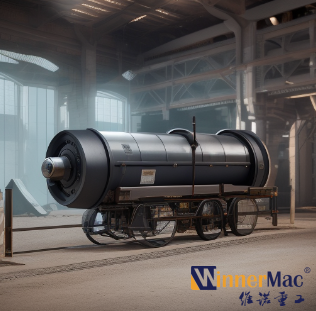A ball mill is a grinding machine used to grind and blend materials for use in mineral processing, ceramics, and other industries. The principle of a ball mill is that the grinding media (usually steel balls) are placed in a rotating cylinder and the material to be ground is fed into the cylinder. The rotation of the cylinder causes the grinding media to cascade and grind the material.
The uses and advantages of ball mills are:
1. Grinding of materials: Ball mills are used for grinding materials such as coal, pigments, and feldspar for pottery.
2. Mixing of materials: Ball mills are used to mix different materials such as cement and silicates to form a uniform mixture.
3. Size reduction: Ball mills are used to reduce the particle size of materials such as ores and chemicals.
4. Durability: Ball mills are durable and can withstand the abrasive environment of mineral processing.
5. Energy-efficient: Ball mills use less energy compared to other types of grinding machines.
6. Versatility: Ball mills can be used for both wet and dry grinding.
7. Cost-effective: Ball mills are relatively low cost, making them suitable for small-scale operations or laboratories.
Overall, ball mills are versatile and widely used in many industries due to their efficiency, durability, and cost-effectiveness.
What is a ball mill? What are its uses and advantages?
disadvantages of ball mill
The ball mill has some potential drawbacks, including:
1. High energy consumption: The machine requires a significant amount of energy to operate, which increases operational costs.
2. Low efficiency: Since the grinding takes place in a rotating cylindrical shell, the particles inside the mill are subjected to different forces and motions, leading to non-uniform grinding and low efficiency.
3. Wear and tear: The constant tumbling of the grinding media and the materials being ground can cause wear and tear on the ball mill's internal components, including the liners and grinding media.
4. Large footprint: Ball mills require a relatively large space compared to other grinding equipment, which can be a disadvantage in smaller facilities or operations with space limitations.
5. Contamination risk: There is a risk of contamination of the product being ground by the grinding media or the internal components of the ball mill. This can affect product quality and purity.
6. Maintenance and repair: Ball mills require regular maintenance, including cleaning, lubrication, and replacement of worn parts, which can be time-consuming and expensive.

You can get the price list and a WinnerMac representative will contact you within one business day.
Copyright © 2015.WinnerMac All rights reserved.WinnerMac